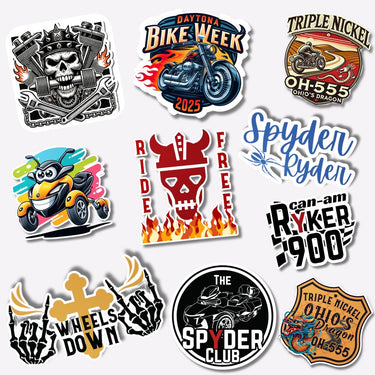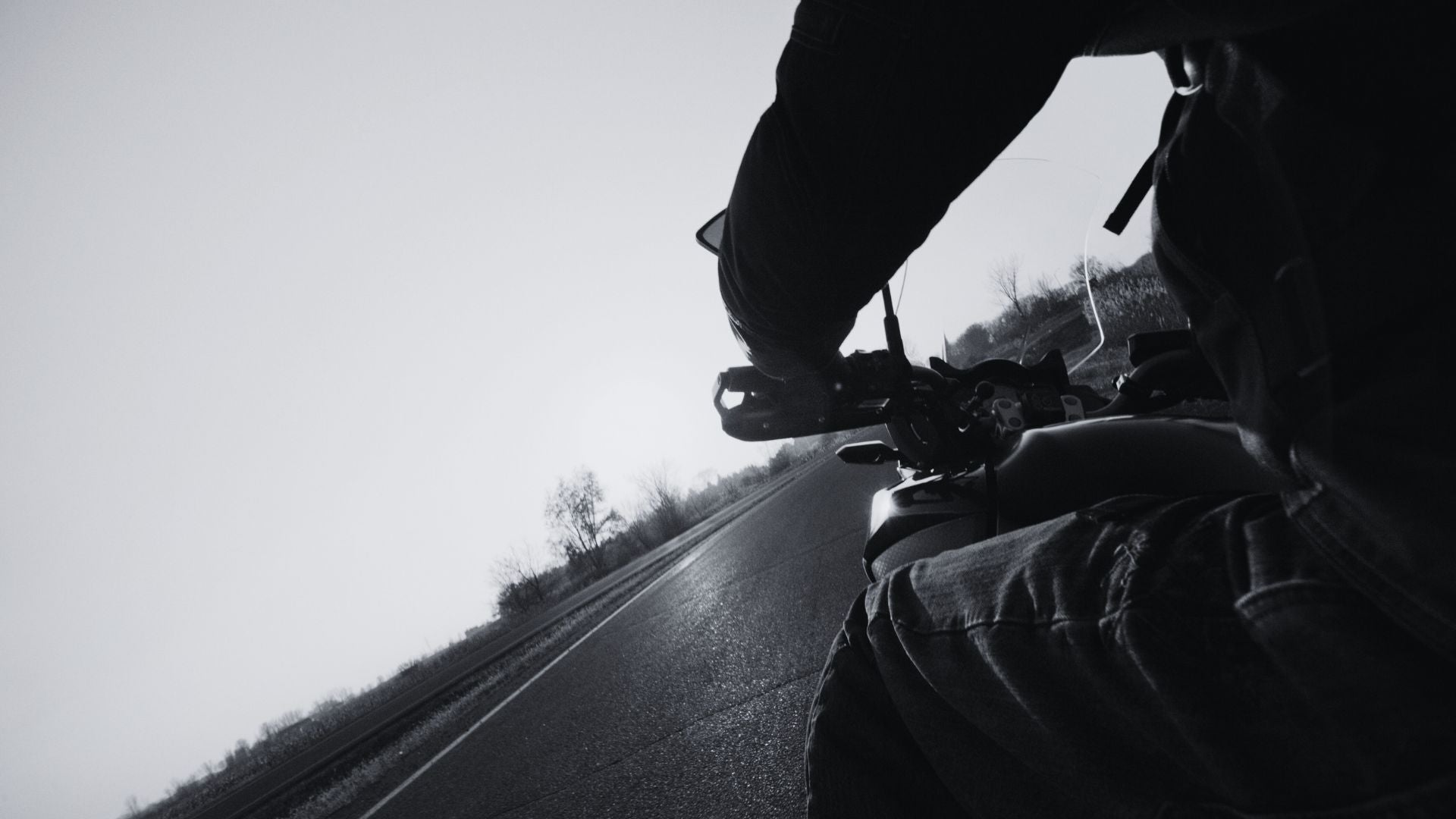Keep Your Three Wheels Rolling Smoothly
If you’re new to the Can-Am Spyder world—welcome! You're officially part of a unique breed of riders who love the wind in their face but don’t mind a little extra tire on the ground. I switched from two wheels to a 2021 Can-Am Spyder RT after years on cruisers and adventure bikes. Between raising triplet boys on my own, working full-time, and going back to college, let’s just say I’ve lived a busy life. So when my move to the hilly backroads of Southeast Ohio made two-wheeled riding less enjoyable, the Spyder brought the joy back—and then some.
But like any machine (and anyone who’s ever raised teenagers knows this too well), a little TLC goes a long way. Let’s talk about essential Spyder maintenance tips to keep you rolling safely and confidently—especially if you’re new to the three-wheeled lifestyle. By way of a disclaimer, these recommendations are general. Refer to your specific vehicle manual or a certified dealer for additional details.
Understanding the Basics of Spyder Maintenance
Why Can-Am Spyder Maintenance Is a Bit Different
Maintaining a Can-Am Spyder is not exactly the same as taking care of a traditional two-wheeled motorcycle. You're working with three wheels, a complex suspension system, an onboard computer (hello, nanny), and more plastic bodywork than most sport bikes dream of. But it’s not rocket science. It’s more like owning a smart pet—feed it right, clean it up, check it often, and it’ll love you back.
Schedule Your Maintenance Mindset
Start with the owner's manual. Yes, I know it’s not exactly riveting reading, but it’s your Spyder’s bible. BRP (Bombardier Recreational Products, the manufacturer) outlines every scheduled service and fluid check for your specific year and model. Follow it like you followed a toddler around with a vacuum cleaner—closely and with urgency.
Keep an Eye on Oil and Filter
Lubrication is Life
Change the oil according to your owner's manual recommendations. For my 21' RT, that means every 9k miles or yearly (after the break-in period). The Spyder’s high-revving Rotax engine is tough, but like any engine, it hates old, dirty oil. Don’t skimp here.
Use BRP's XPS oil or another quality full synthetic that meets the JASO MA2 rating. You can grab an oil change kit on Amazon or from your local Can-Am dealer, and yes—it comes with the filter and all the O-rings you’ll need.
Belt Drive Tension and Wear
No, It’s Not a Chain—but It Still Needs Attention
The Spyder’s rear wheel is powered by a carbon-reinforced drive belt. It's cleaner than a chain and lower maintenance, but not “set it and forget it.”
Inspect your belt tension and alignment every 3,000–5,000 miles. If the belt is too tight, you’ll feel it in your teeth on rough roads. Too loose, and you’ll hear it slapping like a flip-flop in a grocery store. Your dealership can do it, or you can use a Gates sonic tension meter if you’re handy.
Check the belt for signs of fraying or debris—especially if you ride gravel or live where chip seal is a thing (a personal pet peeve here in Ohio).
Brake Pads and Rotors
The Weight of Safety
Spyder braking is no joke. With a front-heavy design and built-in ABS, braking is one of the biggest safety advantages of this ride. But that means the brake pads wear differently than on a regular motorcycle.
Check your brake pads every 5,000 miles—especially the fronts. They’re doing most of the work. If you're hearing a squeal or feel pulsing through the handlebars, you’re overdue.
You can get OEM Can-Am pads or opt for EBC high-performance pads on RevZilla or Amazon. They’re a solid upgrade if you like twisties or ride in hilly terrain like I do.
Tire Pressure and Tread
Three Tires Means Triple the Attention
Unlike cars or bikes, the Spyder’s front tires are a little skinny and oddly sized—which means they wear in a unique pattern.
Check tire pressure before every ride (seriously, every ride). You’ll want 18-20 psi up front and 28-30 psi in the rear depending on your load. Low tire pressure affects handling, especially in corners. If the Spyder starts to feel like it’s tracking over road imperfections, tire pressure or alignment is usually the culprit.
Rotate the front tires at about 7,000–10,000 miles to extend their life and reduce uneven wear. Yep, you can rotate them—just not with the rear.
Battery Maintenance
Don't Let It Die of Neglect
Modern Spyders come with power-hungry electronics, so the battery gets a workout even when it's sitting still.
Use a battery tender if your Spyder will sit more than two weeks. I recommend the Battery Tender Jr. or NOCO Genius—it’ll save you a world of frustration come spring.
Keep the battery terminals clean and tight. A loose ground wire caused my dash to throw a tantrum one time. Lesson learned.
Coolant and Radiator Checks
Because Overheating Is Not Just a Menopause Thing
Your Spyder's liquid-cooled engine relies heavily on its cooling system—especially on those 90-degree days when you’re stuck behind a hay wagon going 25 mph (been there).
Check coolant levels every 3,000 miles and top off with the BRP XPS Extended Life Coolant. While you’re at it, give the radiator a once-over. Look for bug buildup or debris. A plastic paint scraper and some gentle air pressure go a long way.
If the fan sounds like it’s struggling, or you notice the temp gauge creeping past halfway regularly, have it checked before your Spyder stages a rebellion mid-ride.
Software Updates and Diagnostics
Yes, Your Spyder Has a Brain
These machines have more tech than my first car, so keeping the software up to date matters.
Have your dealer run a BUDS (BRP Utility Diagnostic Software) scan at least once a year. There may be recalls, updates, or performance tweaks that you’re missing.
Some DIY riders invest in their own scan tool, but unless you're comfortable navigating a diagnostic interface, leave this one to the pros.
Don’t Skip the Wash and Walk-Around
Maintenance Isn’t Just Mechanical
I know it sounds silly, but a regular wash and visual inspection can save you from bigger problems. I spotted a nail in my rear tire while drying off the fender—just imagine what could’ve happened at 70 mph.
Use a gentle bike-specific cleaner like S100 or Muc-Off, and avoid pressure washers. The Spyder has a lot of electronics tucked in plastic panels that don’t love being power-blasted.
Check for loose panels, cracked lights, or disconnected trim while you're at it. Think of it like a health check after bath time.
Final Thoughts from One Rider to Another
I’ve put more miles on my Spyder in the last two years than I did in my final four years of riding two wheels. It gave me my freedom back—without the anxiety of dumping it on a steep gravel driveway. Maintenance might not be sexy, but it’s the difference between a joy ride and a long walk in riding boots.
As a rider who traded chrome for confidence, I’ll tell you this: take care of your Spyder, and it’ll take care of you. Get to know its quirks, learn what it sounds like on a good day, and don’t ignore it when it starts to whine—just like raising teenagers.










